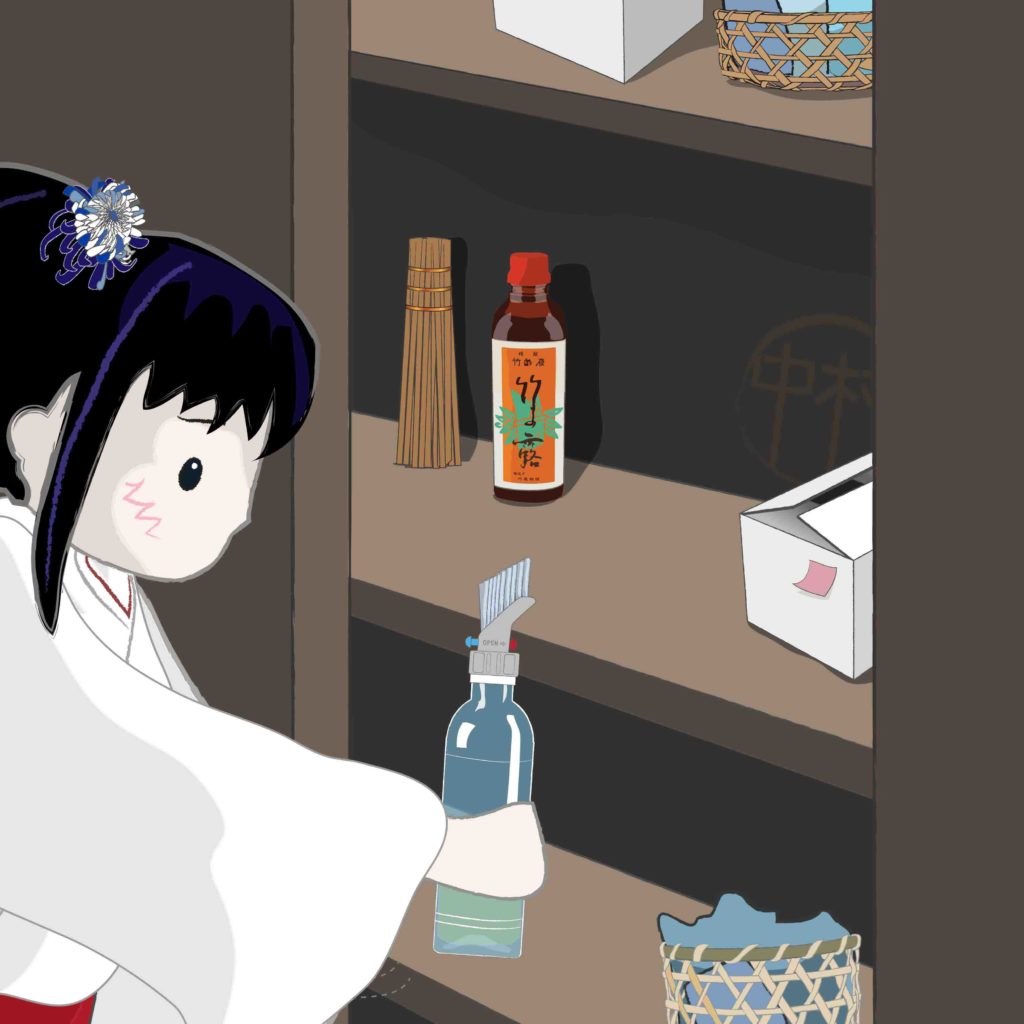Earlier in the year, Miko-chan had asked Mama Kōjin if the next community workshop could be one that looked at tips for cleaning, as she loved to help with the household upkeep.
Every year, the inhabitants of the Bamboo Bathhouse organise a ‘machizemi’ – this is when neighbourhood shops and businesses want to contribute to the local community and hold a local workshop or seminar – the word ‘machi’ means town or neighbourhood, and ‘zemi’ comes from the word ‘seminar’ in English. A machizemi can be anything from a craft workshop to a cooking class or a lecture.
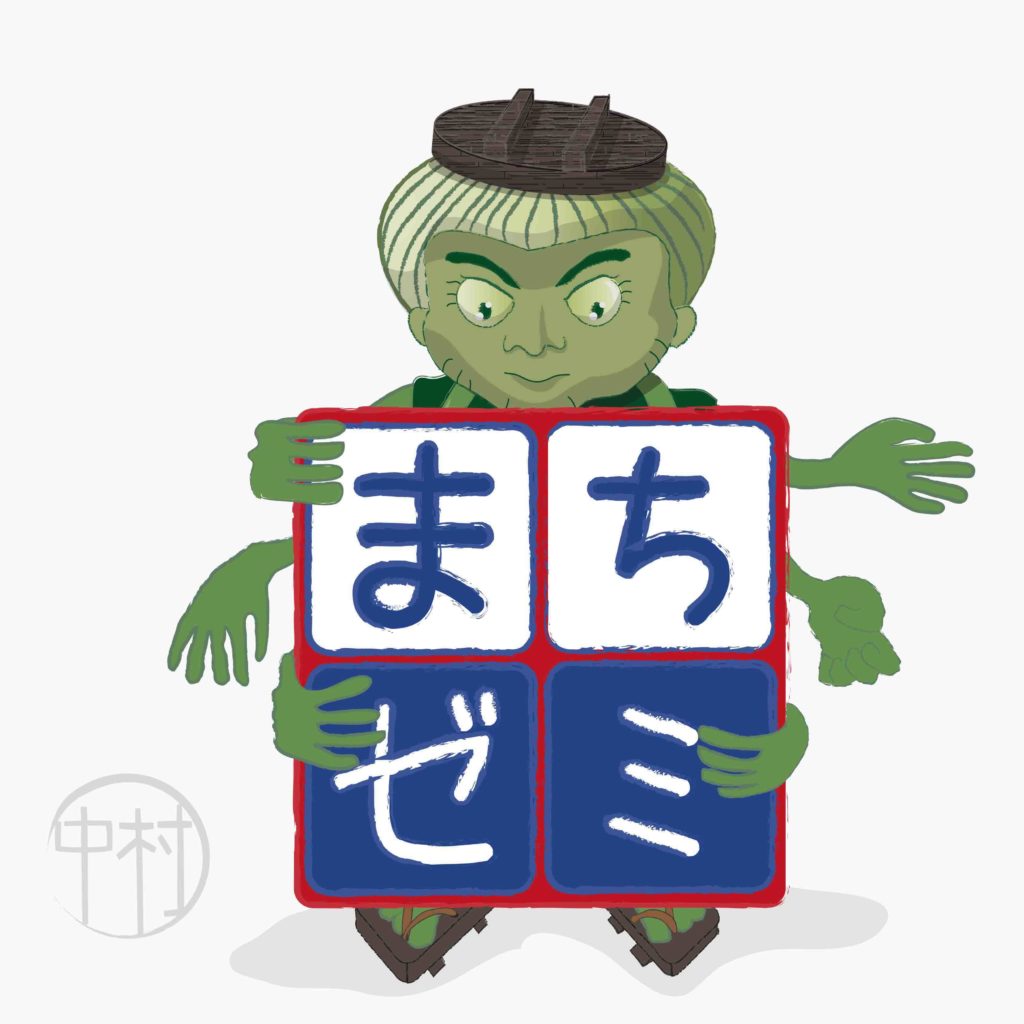
Mama Kōjin decided to hold one in readiness for the upcoming New Year preparations. An important part of these is the ‘big cleanup’ or ōsōji, something undertaken in many Japanese households.
She explained to those gathered that although nowadays many begin to clean on the last few days of the year, the custom had originated earlier in December, on the 13th, when in the past, households performed purification rituals to ward off evil from themselves and their homes, such as hanging talismans (known as monoimi-fuda) outside their homes and avoiding things and behaviours thought to pollute body and soul. The build up of soot was also tackled as part of this, with a task called ‘susu-harai’ – sweeping the soot away.
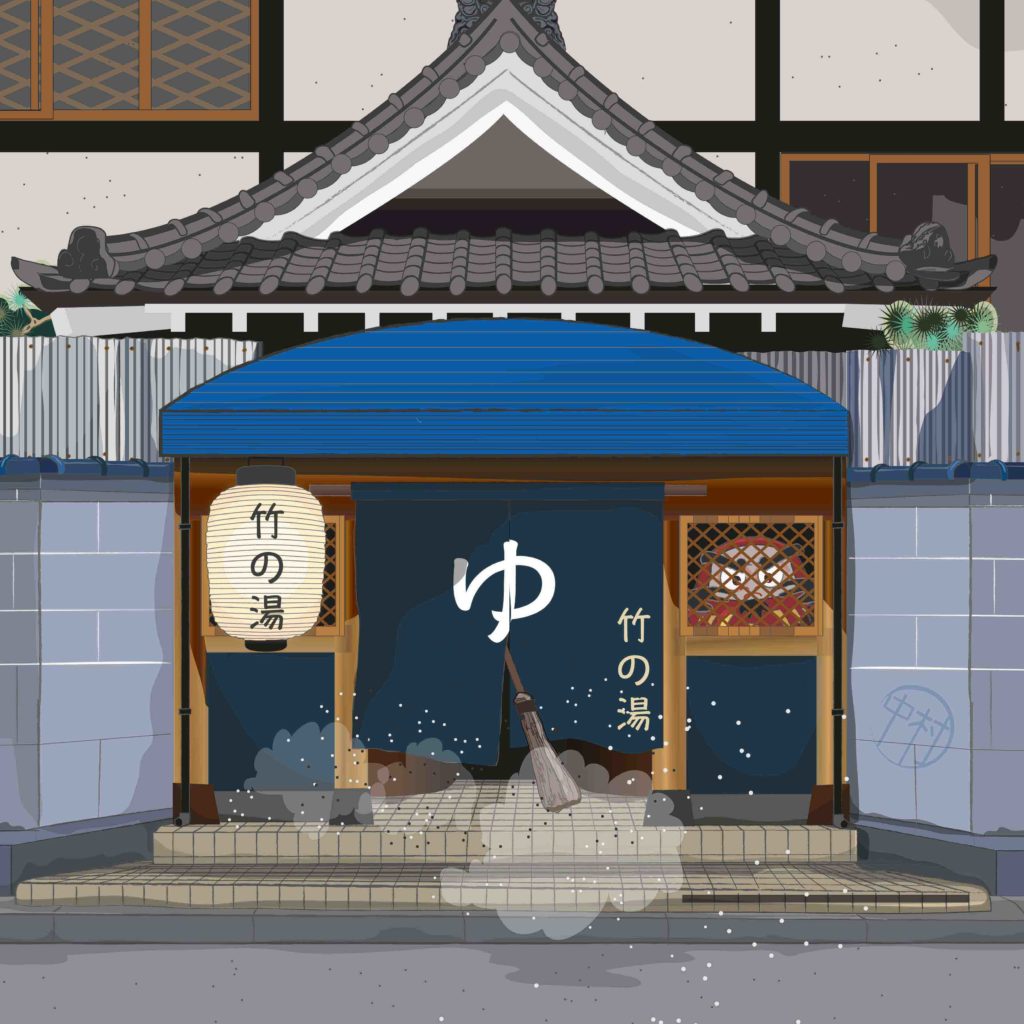
“This has now developed into the practice of ōsoji” she told the group, “and now most often takes place during the last week in December, at a time when other preparations are taking place for greeting the deities of the New Year, the Toshigami. This means cleaning the house, including some jobs that might only happen infrequently and also sorting through items for recycling and disposing of unwanted items.”
“In the spirit of ‘waste not, want not’”, Mama Kōjin continued, I will share with you all today some cleaning tips that make use of things left over in the kitchen and some natural alternatives to chemicals.”
She explained that the water used to rinse rice before cooking had some useful qualities – the milky white water that remains after washing the grains contains the natural oils found in the rice bran, and made a great polish for real wood flooring. “Take a clean cloth and soak in the milky fluid, and then squeeze out. Wipe in the direction of the wood grain for maximum effect. The rice bran also helps to pick up dirt and dust left behind after sweeping, and the oils nourish and protect the wood. To keep the rice water clean whilst using, use a separate bucket to rinse the rag between wipes. You can then use this water when finished to flush the toilet, or use to water houseplants.”
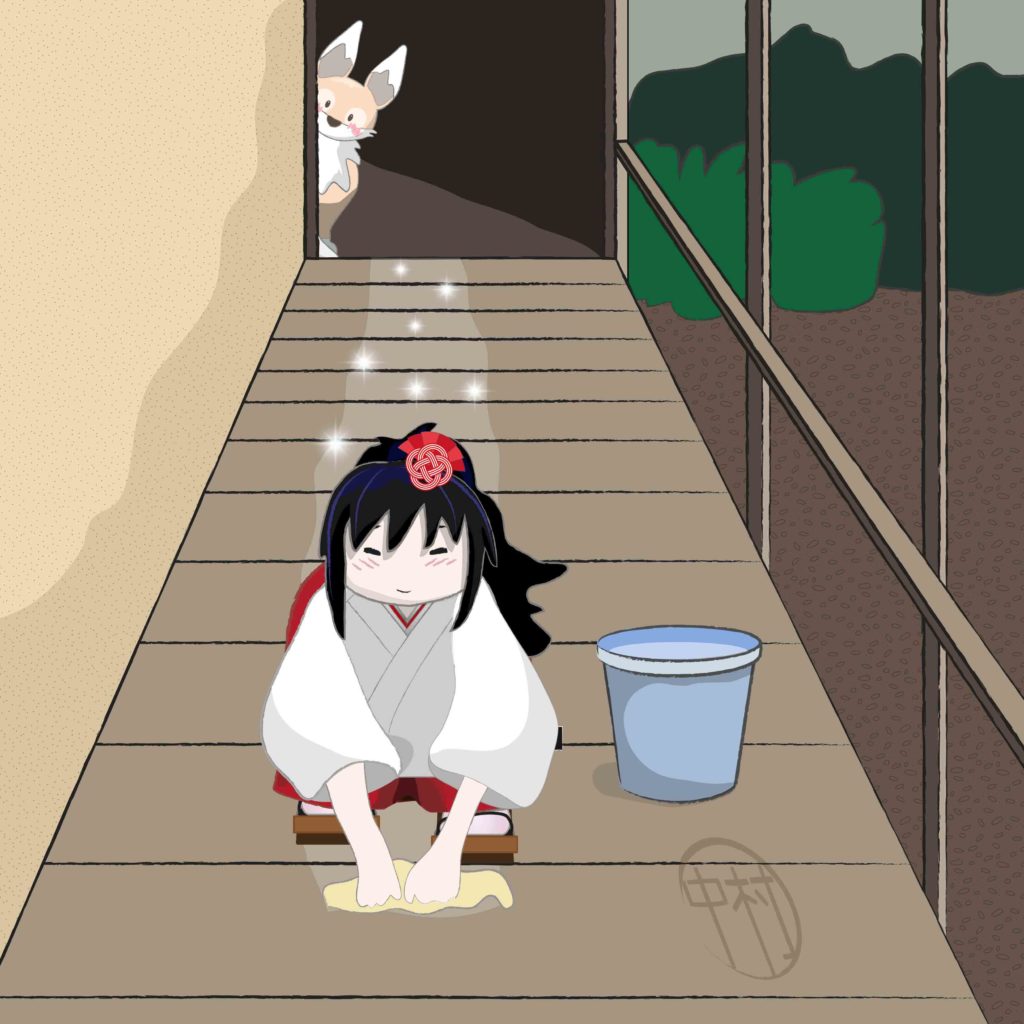
Next, Mama Kōjin showed the group how to make use of used tealeaves. “These are a great way to combat dust and were traditionally used to clean tatami mat flooring”, she explained. “Collect used tea leaves in a covered sieve, which allows most of the water to drain away, but keeps the leaves a little damp. If you sprinkle these over the floor before sweeping, they attract dust, hair and crumbs to them making it easier to pick up by brushing. If you sprinkle on tatami, sweep or vacuum with the grain (normally from side to side). The added benefit is the lovely fragrance from the tealeaves. There are in fact many uses for tea in the home, so I have prepared a leaflet for you, which she handed out to the group.
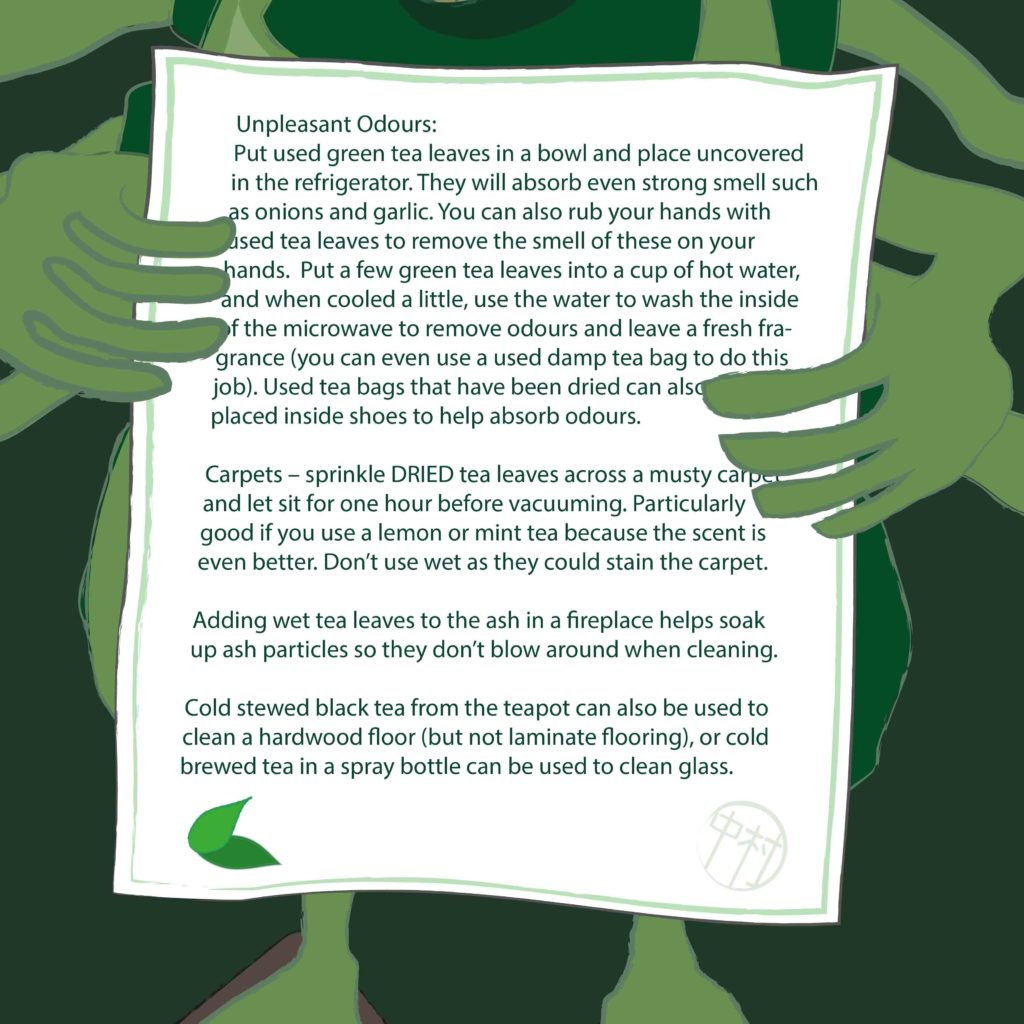
Mama Kōjin then took out a bottle of bamboo vinegar, an inexpensive condiment that is also a natural cleaner. “Vinegars mild acidity makes it great for dissolving grease, mould and mildew and killing bacteria”, Mama Kōjin told them, “it can be added to dishwater to help remove grease, and if you take an old toothbrush, and dip it first in vinegar and then baking soda, it can be used to clean the grout between tiles. It is an excellent cleaner for work surfaces and cutting boards. It is also useful for wiping houseplants with pests on the leaves.
For the final part of the machizemi, Mama Kōjin talked a little about the tools of cleaning, and the care of them.
“You can re-use standard PET plastic bottles from vending machines to clean – with the inexpensive brush screw-on attachment that you can find at 100 yen stores.”
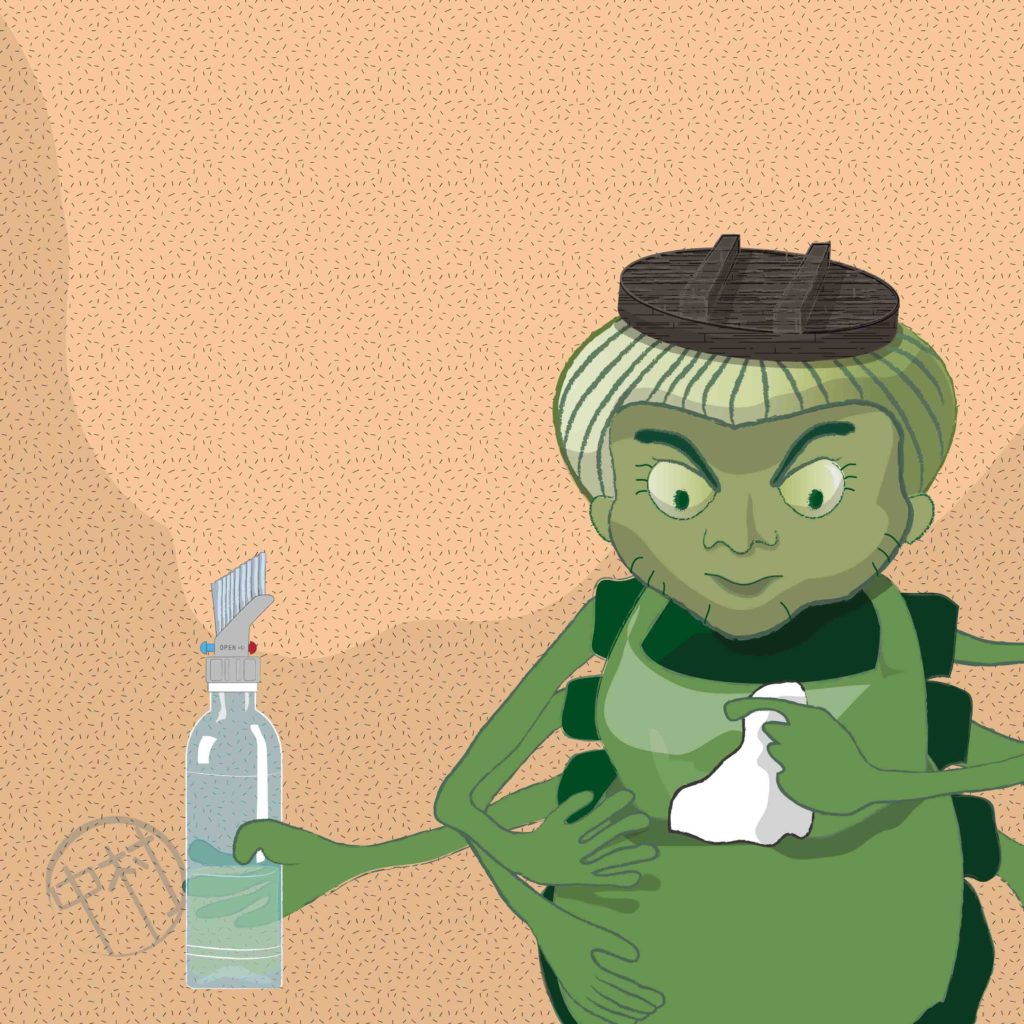
“Old mosquito nets make excellent cleaning cloths – layer two pieces and stitch together, and they get softer and softer with each wash. Living in Japan, we are lucky to be able to use shuro brooms, which are made from the bark of an evergreen palm tree that is grown in southern parts of Japan. They are very long lasting if cared for properly.
Knives and gardening tools can be treated with camellia oil, made from the seeds of the camellia sinensis tree. The oil is acid-free which makes it the ideal choice for protecting tools, knives and blades from rust, especially those made from carbon steel. It is also excellent for wood, as it does not discolour and protects from UV damage.”
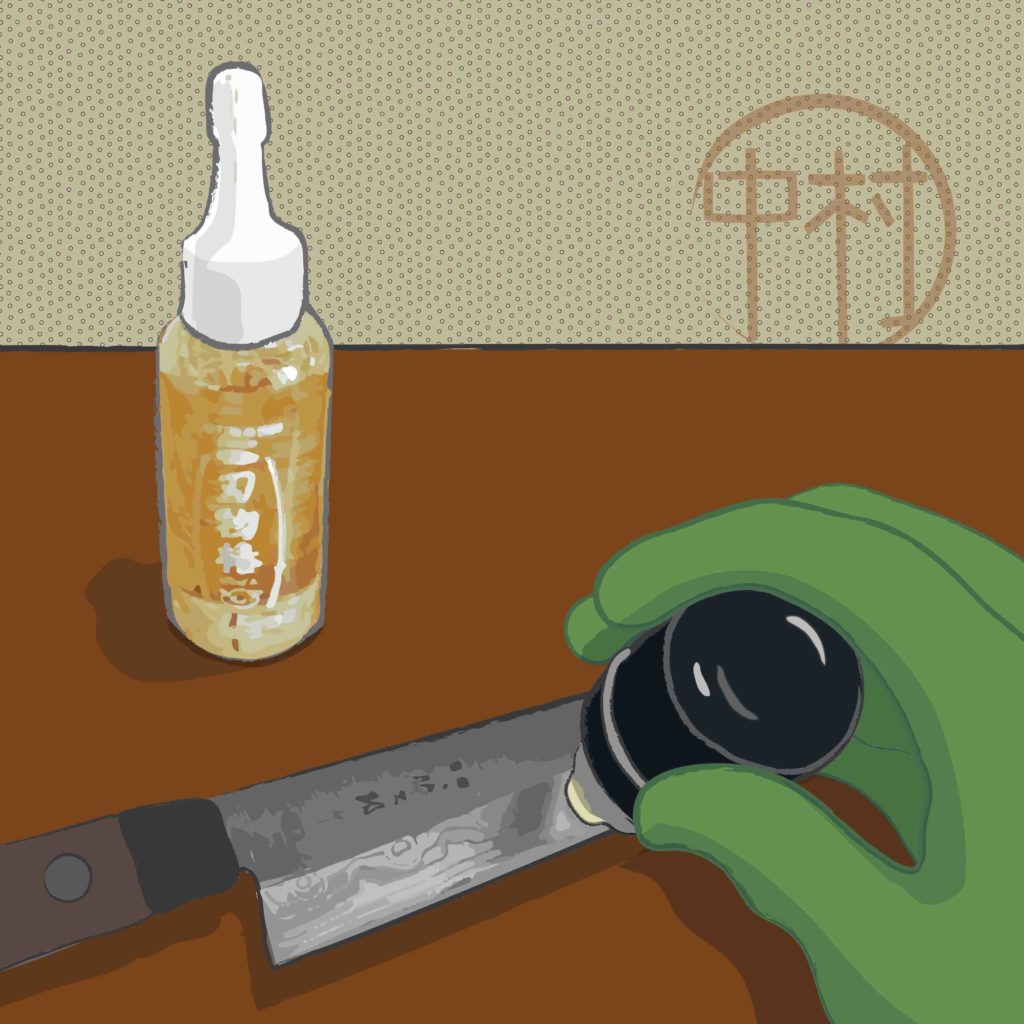
As the workshop came to an end, Mama Kōjin reminded the group that finally, everyone should thank their tools for their service, particularly if putting them away for winter, as with gardening tools. “All tools, but especially brooms are particularly susceptible to turning into yōkai if uncared for.”
Later that day, when the gathered guests had left the Bamboo Bathhouse, Miko-chan made a special visit to the cleaning closet, where she bowed deeply and thanked the assembled tools and cleaning products for their service and usefulness – just in case…
